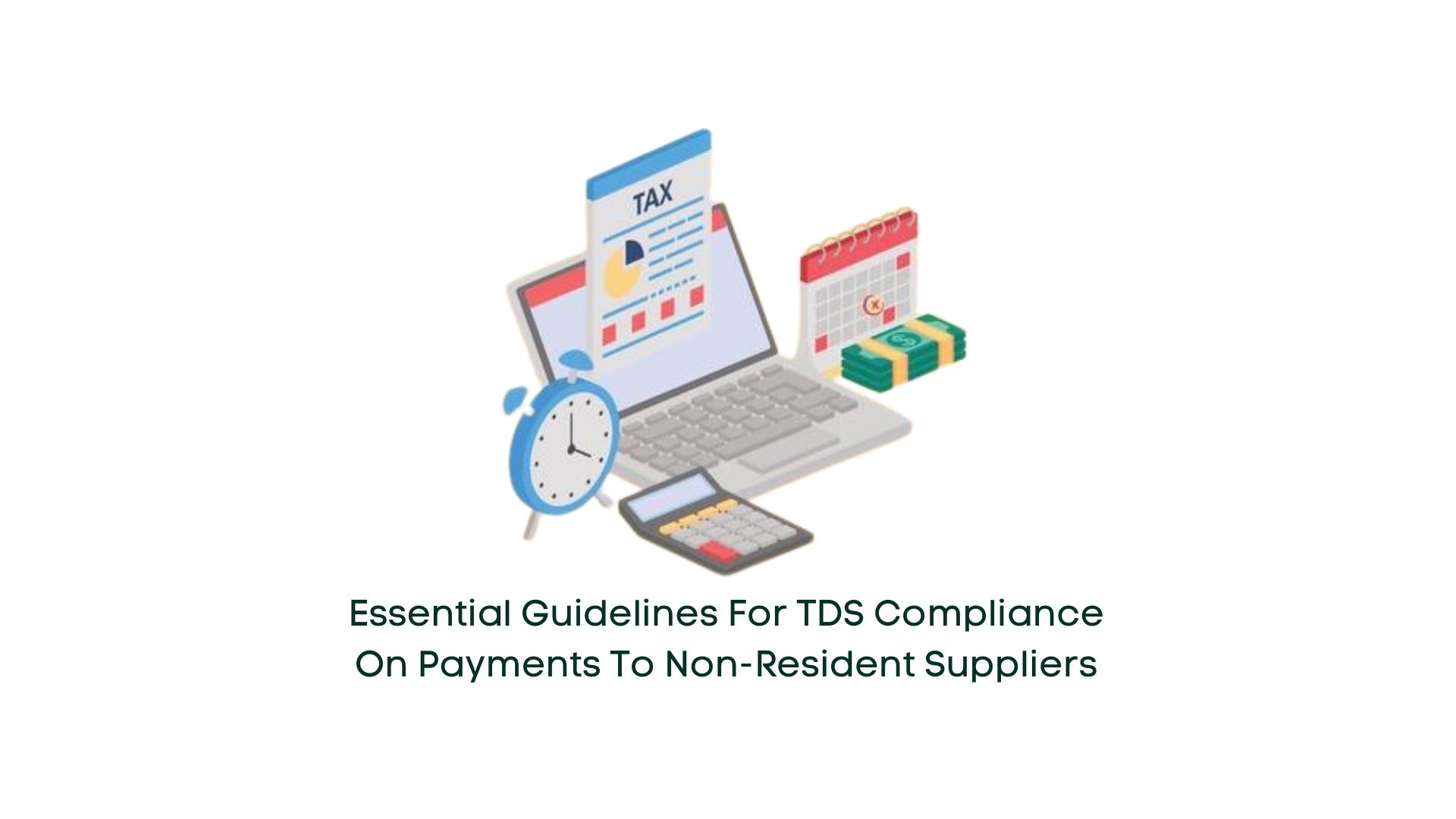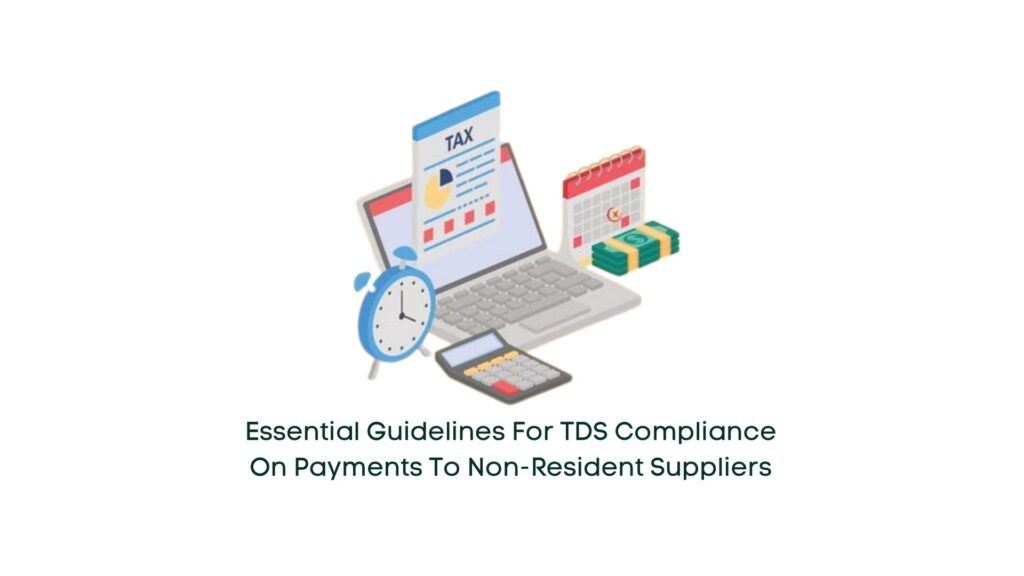
27 Feb Essential Guidelines for TDS Compliance on Payments to Non-Resident Suppliers

Introduction
In today’s global economy, transactions involving Indian taxpayers and non-residents are on the rise. These transactions are subject to Tax Deducted at Source (TDS), where tax is deducted at the point of payment to non-residents. Understanding the intricacies of TDS concerning payments to non-residents is crucial to ensure compliance with tax regulations and avoid incorrect assessments.
Who Qualifies as a Non-Resident?
According to Section 2(30) of the Income Tax Act, a non-resident Indian is an individual who does not reside in India and whose income accrues entirely outside the country. However, if the income has any connection with India, it becomes taxable. Therefore, understanding the criteria for determining non-resident status is essential to ascertain tax liabilities accurately.
Total Income and Taxation
Income Tax Section 5 outlines the concept of total income, stating that a non-resident’s income includes earnings from sources within India or deemed to accrue or arise in India during the assessment year. This means that even income earned abroad but received in India may be subject to taxation.
Understanding TDS
Tax Deducted at Source (TDS) is a mechanism for collecting tax at the source of income. Any individual making payments to another party is required to deduct TDS, which can be later claimed as credit by the recipient. The rates for TDS are specified in the Income Tax Act and the Finance Act, with specific rates applicable to payments to non-residents as per Double Taxation Avoidance Agreements (DTAA).
Legal Framework for TDS on Payments to Non-Residents
Section 195 of the Income Tax Act mandates the deduction of TDS on payments made to non-residents and foreign companies, excluding salary payments. TDS is applicable to various types of payments such as interest, royalties, and other income specified under the Income Tax Act. The timing of TDS deduction is crucial and depends on whether the payment is credited or made, whichever is earlier.
TDS Rates
TDS rates for payments to non-residents vary depending on the nature of the payment and are outlined in Chapter XVII-B of the Income Tax Act. However, it’s important to consider the rates specified in DTAA for accurate tax deductions. Failure to provide a PAN may result in higher TDS deductions.
Threshold Limit and Chargeability of Income
There is no threshold limit for TDS, and tax must be deducted on the total sum chargeable. Income deemed to accrue or arise in India, including salaries earned within the country, is subject to TDS. Understanding the chargeability of income under the Income Tax Act is essential for compliance.
Applicability of Section 206AA
Section 206AA mandates the submission of PAN by the payee; however, exemptions apply to non-residents providing specific details such as contact information and Tax Residency Certificates (TRC) from their home country.
Double Taxation Avoidance Agreement (DTAA) and Tax Residency Certificate (TRC)
DTAA aims to prevent double taxation on the same income in multiple countries. Non-residents can avail TDS benefits as per DTAA provisions by providing TRC, PAN card, self-declaration, and other necessary documents.
Procedure for TDS Deduction under Section 195
The remitter must obtain Form 15CB from a Chartered Accountant and file Form 15CA online before remitting payments to non-residents. Compliance with these procedures ensures accurate TDS deductions.
Conclusion
Navigating TDS regulations concerning payments to non-residents can be complex. It’s essential for Indian entities to determine the taxability of payments, consider DTAA provisions, and adhere to TDS procedures to avoid potential legal implications. Understanding the legal framework surrounding TDS ensures proper tax compliance and minimizes risks for both taxpayers and non-residents.


No Comments